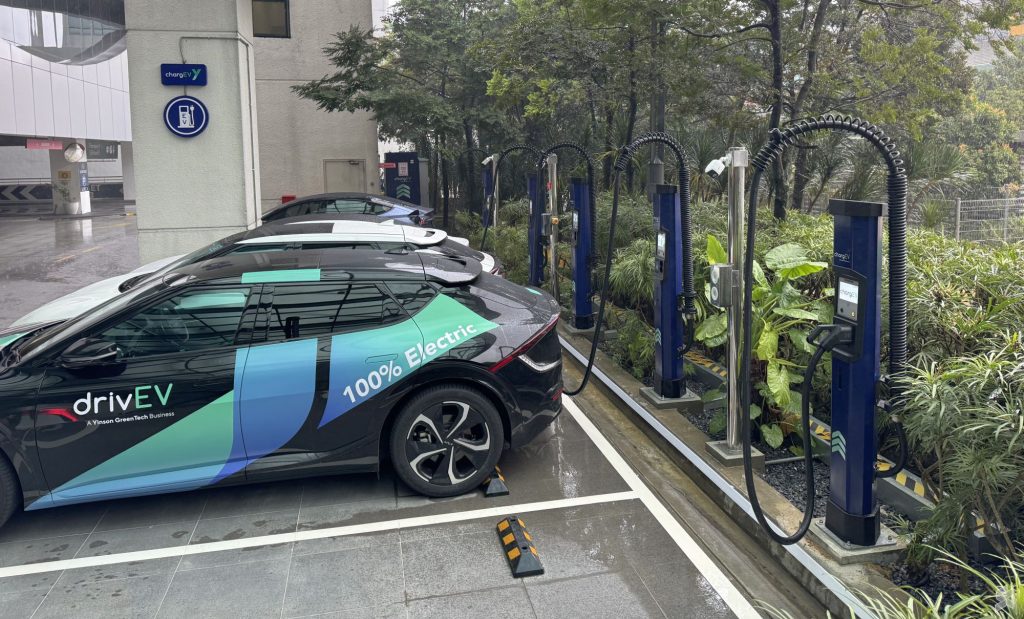Samsung has a new book-style foldable flagship to offer, but it has plenty of competition on the market. The first smartphone that comes to mind to many people, including us, is the OnePlus Open. In this article, we’ll be comparing the Samsung Galaxy Z Fold 6 vs OnePlus Open. These two smartphones are considerably different. That goes for their designs and pretty much everything else really.
The two companies took considerably different approaches to their book-style foldables. We will first list the specifications of both smartphones. Following that, we’ll compare them across a number of categories, including design, display, performance, battery, cameras, and audio. There’s plenty to talk about here, so… let’s get started.
Specs
Samsung Galaxy Z Fold 6 & OnePlus Open, respectively
– Screen size (main):
7.6-inch Foldable Dynamic LTPO AMOLED 2X display (120Hz, HDR10+, 2,600 nits)
7.82-inch LTPO 3 AMOLED display (120Hz, Dolby Vision, 2,800 nits)
– Screen Size (cover):
6.3-inch Dynamic LTPO AMOLED 2X (120Hz, 1,600 nits)
6.31-inch LTPO3 OLED (120Hz, 2,800 nits)
– Display resolution (main):
1856 x 2160
2268 x 2440
– Display resolution (cover):
2376 x 968
2484 x 1116
– SoC:
Qualcomm Snapdragon 8 Gen 3 for Galaxy
Qualcomm Snapdragon 8 Gen 2
– RAM:
12GB (LPDDR5X)
16GB (LPDDR5X)
– Storage:
256GB/512GB/1TB (UFS 4.0)
512GB (UFS 4.0)
– Rear cameras:
50MP (wide, f/1.8 aperture, Dual Pixel PDAF OIS), 12MP (ultrawide, 123-degree FoV), 10MP (telephoto, 3x optical zoom)
48MP (wide, f/1.7 aperture, multi-directional PDAF, OIS), 48MP (ultrawide, 114-degree FoV), 64MP (periscope telephoto, 3x optical zoom, 6x “in-sensor” zoom, macro)
– Front cameras:
4MP (under display, main display, f/1.8 aperture), 10MP (cover display, f/2.2 aperture)
20MP (main display, f/2.2 aperture), 32MP (cover display, f/2.4 aperture)
– Battery:
4,400mAh
4,805mAh
– Charging:
25W wired, 15W wireless, 4.5W reverse wireless (no charger)
67W wired, 5W reverse wired (charger included)
– Dimensions (unfolded):
153.5 x 132.6 x 5.6 mm
153.4 x 143.1 x 5.8mm
– Dimensions (folded):
153.5 x 68.1 x 12.1 mm
153.4 x 73.3 x 11.7mm
– Weight:
239 grams
239/245 grams
– Connectivity:
5G, LTE, NFC, Wi-Fi, USB Type-C, Bluetooth 5.3
– Security:
Side-facing fingerprint scanner
– OS:
Android 14 with One UI 6.1.1
Android 13 with OxygenOS (upgradable)
– Price:
$1,699
$1,699
– Buy:
Galaxy Z Fold 6 (Samsung / Best Buy)
OnePlus Open (Best Buy)
Samsung Galaxy Z Fold 6 vs OnePlus Open: Design
The moment you lay your eyes on the two phones, you’ll notice how different they are. They both use aluminum for their frame, but have different backplates. The Galaxy Z Fold 6 has a glass backplate, while the OnePlus Open utilizes eco leather or glass. The vegan leather variant of the OnePlus Open is grippier, of course. That large circular camera island on the back also helps with grip, as it’s a great anchor for your finger. It does protrude quite a bit on the back, though.
The Galaxy Z Fold 6, on the other hand, has three vertically-aligned cameras in the top-left corner. Those cameras have a less pronounced bump but don’t have a secondary purpose. The Galaxy Z Fold 6 is also more square than the OnePlus Open. Both smartphones do have flat sides all around, but the corners on the Fold 6 are more pronounced. Both smartphones do fold flat and have very good hinges. The display crease is less pronounced on the OnePlus Open, though, noticeably less.
The OnePlus Open is wider than the Galaxy Z Fold 6. When folded, it’s more the size of a regular smartphone in terms of display aspect ratio. Both devices have a centered display camera on the top of their cover displays. The Galaxy Z Fold 6 includes an under-display camera on the main display. The OnePlus Open has a punch hole in the top-right corner of its main display. Both smartphones feel really good in the hand, but entirely different. They’re the same in terms of width too. Well, the glass variant of the OnePlus Open is 6 grams heavier.
Samsung Galaxy Z Fold 6 vs OnePlus Open: Display
The Samsung Galaxy Z Fold 6 features a 7.6-inch Foldable Dynamic LTPO AMOLED 2X main display. That display has a resolution of 1856 x 2160 and a refresh rate of up to 120Hz. HDR10+ content is supported here, while the display’s brightness goes up to 2,600 nits. The screen-to-body ratio is 91%. The cover display measures 6.3 inches and it’s a Dynamic LTPO AMOLED 2X panel. The resolution here is 2376 x 968, while this panel also goes up to 120Hz in terms of the refresh rate. The peak brightness is at 2,600 nits, while the Gorilla Glass Victus 2 protects the display.

The OnePlus Open, on the other hand, has a 7.82-inch Foldable LTPO3 Flexi-fluid AMOLED display for its main panel. That display has a resolution of 2268 x 2440, and it can project up to 1 billion colors. It supports Dolby Vision and the refresh rate goes up to 120Hz. The peak brightness goes up to 2,800 nits on this panel, while the screen-to-body ratio is 89.6%. The cover display is a 6.31-inch LTPO3 Super Fluid OLED panel. It has a refresh rate of up to 120Hz, and it can also project up to 1 billion colors. Dolby Vision is supported here too, while the brightness goes up to 2,800 nits. This panel has a resolution of 2484 x 1116 and it’s protected by the Ceramic Guard protection.
All four displays are actually really good. They all offer vivid colors, great viewing angles, and a good touch response. All four panels also get more than bright enough, even when you’re using them outdoors. The OnePlus Open’s panels do have a couple of advantages, though. The main display on the phone has a less pronounced display crease. Yes, it’s noticeable. The cover display, on the other hand, has an ideal aspect ratio. You’ll feel more like you’re using a regular smartphone when using its cover display.
Samsung Galaxy Z Fold 6 vs OnePlus Open: Performance
The Snapdragon 8 Gen 3 for Galaxy SoC fuels the Galaxy Z Fold 6. That is an overclocked variant of the Snapdragon 8 Gen 3. Samsung’s handset also includes 12GB of LPDDR5X RAM and UFS 4.0 flash storage. The OnePlus Open, on the flip side, comes with the Snapdragon 8 Gen 2 processor. That is Qualcomm’s flagship chip for last year, it’s still very powerful. The phone comes with 16GB of LPDDR5X RAM and UFS 4.0 flash storage.
Despite the fact the Galaxy Z Fold 6 has a more powerful processor, the two smartphones offer comparable performance for regular day-to-day tasks. They’re both extremely fluid, there’s no sign of lag or anything like that. They both open apps really fast and handle basically anything with ease. The same can be said for gaming too, as not even truly graphically intensive games are a problem for the two devices. Yes, they do get warm during gaming, but not too hot or anything like that. There’s also no sign of throttling.
Samsung Galaxy Z Fold 6 vs OnePlus Open: Battery
You will find a 4,400mAh battery inside the Galaxy Z Fold 6. The OnePlus Open, on the other hand, has a 4,805mAh battery on the inside. The OnePlus Open does have a bigger battery, but it also has bigger displays. Does it offer better battery life, though? Well, yes, but not by a lot. The Galaxy Z Fold 6 actually offered rather good battery life, better than we’ve had with the Galaxy Z Fold 5 as of late.
Getting to over 7 hours of screen-on-time on both devices is possible, but it all depends on how you use them. Using the cover display is the key, of course, in addition to not using many intensive apps (such as demanding games). If you do use your phone quite intensively during the day, chances are you’ll fly below that 7-hour screen-on-time mark. Your mileage may vary, of course, it all depends. Battery life is a very subjective thing. The point is that both smartphones do offer good battery life.
When it comes to charging, the OnePlus Open does offer faster charging, but the Galaxy Z Fold 6 is more versatile. The OnePlus Open supports 67W wired charging, and reverse wired charging, but not wireless charging. The Galaxy Z Fold 6 offers 25W wired, 15W wireless, and 4.5W reverse wireless charging. The OnePlus Open will charge a lot faster than its competitor. It also comes with a charger in the box unlike the Galaxy Z Fold 6.
Samsung Galaxy Z Fold 6 vs OnePlus Open: Cameras
Both of these phones do offer three cameras on the back, but they’re significantly different. The Galaxy Z Fold 6 comes with an unchanged setup on the back, compared to its predecessor. It has a 50-megapixel main camera, a 12-megapixel ultrawide unit (123-degree FoV), and a 10-megapixel telephoto camera (3x optical zoom). The OnePlus Open has a 48-megapixel main camera, a 48-megapixel ultrawide unit (114-degree FoV), and a 64-megapixel periscope telephoto camera (3x optical zoom).


OnePlus’ handset does come with bigger and more advanced camera sensors. In addition to that, it offers Hasselblad support, and it actually has a periscope telephoto camera for farther zooming options. In our experience, the OnePlus Open does do a better job in the camera department. The images end up looking better overall, with more details, and they’re simply well-balanced. The camera is also more reliable, not to mention more versatile thanks to the periscope telephoto camera.
The images from the OnePlus Open do tend to look more contrasty, that goes for both daylight and nighttime shots. The Galaxy Z Fold 6 does manage to keep up to a degree. The pictures from that phone are comparable to its predecessor, but they still look a bit different. The saturation can be tuned a bit too high at times, but other than that, the shots look quite good. Another update or two could improve things further.
Audio
You will find stereo speakers on both of these smartphones. The ones on the Galaxy Z Fold 6 are actually louder in comparison. Both sets of speakers offer good sound output, but if you’re looking for louder ones, Samsung’s implementation is the way to go. The difference is noticeable.
Neither smartphone offers an audio jack. You can always use their Type-C ports for wired audio connections. If not, both smartphones do support Bluetooth 5.3, so you can connect your headphones wirelessly.



